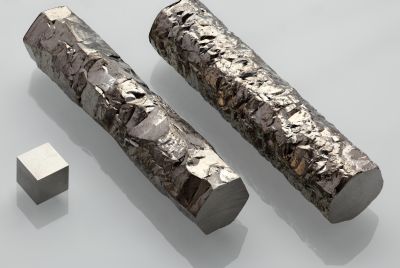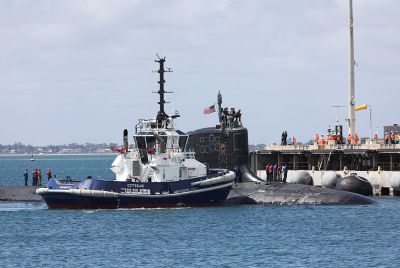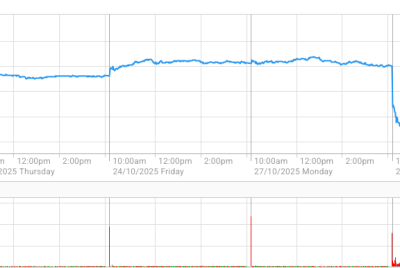AUKUS Just Got Real: Australia Made 11 Major Announcements in 3 Days — Here's What's Actually Happening

WHAT YOU NEED TO KNOW:
The Event: Indo Pacific 2025 (November 4-6 in Sydney) brought 25,000 attendees, 900+ defense exhibitors, and 200+ naval delegates from 50+ nations for the world's largest maritime exposition focused on AUKUS submarine progress.
Major Announcements:
- PMB Defence (Adelaide) will supply batteries for Australian AND UK AUKUS submarines—$34+ million contracts, first Australian tech exported to UK nuclear subs
- 11 Australian companies qualified to enter US nuclear submarine supply chain (378 companies applied)
- Four defense giants (BAE, General Dynamics, Raytheon, Thales) teamed up for SSN-AUKUS combat system
- $277 million Collins-class submarine extension to keep aging fleet running until nuclear subs arrive
- Confirmed: September 2026 preliminary design review for SSN-AUKUS
The Money: Australia investing $159 billion over next decade in maritime capabilities. But former PM Malcolm Turnbull warns current defense spending "isn't enough" for nuclear navy and other needs.
Trump Factor: Defense Industry Minister Pat Conroy quoted Trump saying AUKUS is "proceeding at full steam ahead," addressing concerns about US commitment under the administration.
Three Days That Changed Australia's Defense Future
If you wanted to see Australia's nuclear submarine ambitions become real, Indo Pacific 2025 was where it happened.
Over three days in Sydney, the Australian government and defense industry made announcement after announcement showing AUKUS is moving from PowerPoint slides to actual manufacturing, contracts, and supply chains.
"Once you're in, you're in," one defense industry executive remarked. "We have to keep going about that every single day in order to make sure we deliver that capability."
That commitment is showing up in dollars, factories, qualified suppliers, and—perhaps most importantly—Australian technology being selected for British and American submarines, not just the other way around.
The Adelaide Battery Breakthrough
The biggest surprise? An Adelaide company beating global competition to supply a critical component for nuclear submarines.
Defense Industry Minister Pat Conroy announced that PMB Defence will supply nickel zinc batteries for AUKUS submarines—not just Australia's boats, but also the UK's fleet.
"Today I'm announcing that PMB, a great innovative Australian company based in Adelaide will be supplying batteries to the AUKUS submarines, not just Australia's AUKUS submarines, but the submarines to be manufactured in the United Kingdom," Conroy said.
The contracts with BAE Systems are worth more than A$34 million (US$22 million), with expectations of more than doubling once the technology is proven for SSN-AUKUS boats.
This is significant because PMB already supplies main storage batteries for Australia's Collins-class submarines. Now they're exporting that expertise back to the UK—reversing the typical flow of technology in AUKUS.
"This will add to the work that we're already doing for the UK through the Astute and Dreadnought-class programs," said Mike Hartas from PMB Defence.
It's also creating jobs: the announcement adds to 450 jobs already generated through ASC and BAE working on AUKUS in South Australia.
378 Companies Applied, 11 Made the Cut
Perhaps the most significant long-term development: Australian companies are breaking into the ultra-exclusive US nuclear submarine supply chain.
H&B Defence (a joint venture between Huntington Ingalls Industries and Babcock created in June 2024) issued an expression of interest for Australian involvement in the nuclear submarine enterprise.
378 Australian companies responded.
On November 4, 11 companies were successfully validated against HII's Newport News Shipbuilding standards through the Australian Submarine Supplier Qualification (AUSSQ) program:
- CQMS
- AW Bell
- AJAX
- Hycast
- Intercast
- Supashock
- Camco
- Stella
- Ferra
- Axiom
- Marand
These suppliers were benchmarked to meet the exacting standards of US nuclear submarine construction—one of the world's most demanding defense supply chains.
Once additional requirements are completed, they'll join eight other Australian suppliers already in the NNS supply chain. Three have already received formal requests for quotation to supply the US Navy.
"The AUSSQ programme has rapidly matured into a proven and effective model for preparing Australian businesses to compete in one of the world's most demanding defence supply chains," HII stated.
Michael Lempke, H&B Defence Board Chair, emphasized the export opportunity: "The AUSSQ programme is delivering real capability, real opportunity and real momentum to position Australian businesses for AUKUS export opportunities in the US."
The Four-Company Combat System Team
On November 5, four defense giants announced they're teaming up to develop the combat system for SSN-AUKUS submarines.
BAE Systems, General Dynamics Mission Systems, Raytheon Australia, and Thales signed a Memorandum of Understanding to design a "tri-national Command System as a shared solution for Australia and the U.K."
The system will build on General Dynamics' existing AN/BYG-1 combat management system—which is already installed on Australia's Collins-class submarines and will be on the Virginia-class boats Australia receives from the US.
"The MoU acknowledges that the team successfully delivering submarine combat system capability to the three nations via separate efforts today should be entrusted to sustain and integrate combat systems aboard Virginia and AUKUS submarines," the companies stated.
This isn't just about Australia buying American or British technology—it's about creating an integrated system that all three navies can use, with Australian industry at the table from day one.
The Reactor That Powers It All
Rolls-Royce confirmed details about the nuclear reactors that will power SSN-AUKUS boats.
Steve Carlier, Rolls-Royce Submarines President, told Naval News that Rolls-Royce will provide all nuclear reactor plants for SSN-AUKUS using third-generation PWR3+ reactors—an upgrade of the PWR3 in the Royal Navy's Dreadnought-class submarines.
The PWR3+ offers several advantages:
Greater Operational Flexibility: Crews have more options for how to use reactor energy. For example, submarines can use their own power when docked instead of relying on shore-based electrical supply.
Enhanced Safety: Higher safety levels even under fault conditions.
Lifetime Power: Reactors last the entire 30+-year lifespan of each submarine—no refueling needed.
Reactor components will be manufactured in the UK, then shipped to Australia for installation at Osborne Naval Shipyard in South Australia.
Rolls-Royce is the only private company in the world "with the nuclear capability to manage reactor design, manufacture and decommissioning within one single entity," according to the company.
Keeping the Collins Class Alive
While Australia prepares for nuclear submarines, it still needs to keep its aging Collins-class diesel-electric fleet operational.
Defense issued a $277 million (US$180 million) contract extension to Raytheon Australia for combat systems sustainment on the six Collins-class submarines. The 3-year-and-9-month contract covers system integration, architecture and design, upgrades, technical support, and procurement.
The first Collins submarine, HMAS Farncomb, enters a life-of-type extension (LOTE) program next year. Each LOTE takes two years and extends each boat's life by ten years—buying time until nuclear submarines arrive.
As Royal Australian Navy officials put it, they're taking an "integrated approach" to orchestrating two programs simultaneously: freshening up legacy submarines while preparing for nuclear-powered boats.
The Unmanned Revolution
AUKUS Pillar 2—focusing on advanced technologies beyond submarines—got significant attention.
HII and Babcock signed a memorandum of understanding to integrate HII's REMUS unmanned underwater vehicles (UUV) with Babcock's weapon handling and launch system.
The US Navy already demonstrated launching and recovering a REMUS 620 UUV from a Virginia-class submarine in October. The Royal Navy plans similar trials in 2026.
Nick Hine, Chief Executive Marine at Babcock, noted the potential: "There are AUKUS opportunities if everybody wants to take them of having a single underwater vehicle operating between three nations."
The same system could be retrofitted to Collins-class submarines to launch UUVs, giving Australia's existing fleet new capabilities while awaiting nuclear boats.
Eric Chewning, HII's Executive VP for Maritime Systems, explained the vision: "Where you start to really see the benefit of the trilateral cooperation is in that AUKUS Pillar 2... As we start to think about what do I wrap around the submarine itself, which is already the premier apex predator in the ocean, to make it even deadlier and more capable?"
The $159 Billion Question
Defense Minister Richard Marles provided the big-picture numbers during his Indo Pacific address.
Australia is investing $159 billion over the next decade in maritime capabilities. That includes:
- Nuclear-powered submarines
- More than doubling the surface fleet
- Hunter-class frigates
- Modified Mogami frigates (fastest major defense acquisition in Australian peacetime history)
- Collins-class life extensions
- New patrol boats, landing craft
"Show me your budget and I'll show you your priorities," Marles said, quoting an unnamed US president.
The investment reflects Australia's commitment to "continuous naval shipbuilding"—avoiding the boom-bust cycles that kill industrial capability and make programs more expensive.
South Australia will handle major surface vessels and submarines at Osborne. Western Australia will produce patrol boats, frigates and landing craft.
"That requires huge political commitment," Marles acknowledged, "because the initial investment is always more expensive than trying to find something off an existing production line."
Malcolm Turnbull's Warning
Not everyone at Indo Pacific was celebrating.
Former Prime Minister Malcolm Turnbull—who initiated the preliminary AUKUS discussions during his term—walked the exhibition halls and spoke to Defense Connect with a sobering message.
"I don't think our current expenditure on defence is enough to pay for a nuclear navy and all of the other capabilities we need," Turnbull said.
His concerns focus on US submarine production capacity: "The problem that we have with AUKUS... is that our ability to receive Virginia Class submarines is going to depend on the Americans being able to produce enough for themselves and then more for us ... and there is no sign of them being able to lift the production rate."
US submarine production has been flat despite significant additional investment, raising questions about whether America can deliver Virginia-class boats to Australia on schedule starting in 2032 while also meeting its own navy's needs.
Turnbull's critique reflects broader concerns that AUKUS timelines are optimistic given real-world production constraints.
The Trump Factor
One question loomed over the entire event: Is the Trump administration committed to AUKUS?
Defense Industry Minister Pat Conroy directly addressed this, quoting Trump: "AUKUS, in the words of President Trump is 'proceeding at full steam ahead.'"
Royal Australian Navy officials expressed confidence. Speaking about Trump, one official said: "My view is, based on what Trump said publicly, he's committed to the AUKUS program. We're investing in the U.S. industry base, the U.S. is driven to ensuring we have the best capability, because it's in their benefit to have us with a submarine that can survive in the future threat."
The argument: Australia is putting billions into expanding US submarine production capacity, creating more boats for the US Navy while also enabling Australian acquisition.
Still, the Trump administration has ordered reviews of various international commitments, creating some uncertainty even as officials express support.
September 2026: The Critical Milestone
Multiple sources confirmed that the preliminary design review for SSN-AUKUS is expected in September 2026.
This is a crucial milestone that will reveal whether the trilateral submarine design incorporating UK hull, US weapons systems, and collaborative technology actually works as an integrated package.
The timeline means Australia and the UK will see detailed designs in less than a year, allowing industry to finalize manufacturing plans and supply chains.
South Australia's Moment
The event showcased South Australia's transformation into a defense industrial powerhouse.
More than 65 South Australian companies exhibited at Indo Pacific, demonstrating capabilities across submarines, frigates, autonomous systems, guided weapons, cyber, and advanced manufacturing.
The state is home to:
- SSN-AUKUS submarine construction at Osborne
- Hunter-class frigate build
- Collins-class life extensions
- Hobart-class destroyer combat system upgrades
South Australian companies are already delivering to international programs including the US Navy and UK's Type 26 frigates.
AML3D, a South Australian company specializing in large-scale metal additive manufacturing, is now contracted to supply parts to the US Columbia-class nuclear ballistic missile submarine program—America's highest-priority naval program.
Matt Opie, Defence SA Chief Executive, emphasized the ambition: "Indo Pac provides us with the opportunity to showcase how South Australian capability is ready today to support Australia's sovereign shipbuilding enterprise, while also strengthening partnerships across the Indo-Pacific and beyond."
What Happens Next
Short Term (2025-2026):
- HMAS Farncomb enters Collins LOTE program in 2025
- SSN-AUKUS preliminary design review September 2026
- Additional Australian companies qualify for US supply chains
- PMB Defence battery technology validation for SSN-AUKUS
Medium Term (2027-2032):
- Osborne Naval Shipyard expansion to nuclear capability
- First Virginia-class submarines transferred to Australia (target: 2032)
- Hunter-class frigate construction ramps up
- Modified Mogami frigates delivered (fastest acquisition in Australian history)
Long Term (2033-2040s):
- First Australian-built SSN-AUKUS submarines delivered
- Full nuclear submarine capability operational
- Continuous naval shipbuilding sustains industrial base
- Export opportunities for Australian submarine technology
The Bottom Line
Indo Pacific 2025 showed AUKUS moving from concept to reality—with Australian companies not just participating but leading in specific technologies like batteries and additive manufacturing.
The $159 billion investment over the next decade demonstrates serious political commitment. Qualifying 11 companies for US nuclear supply chains shows industrial progress. PMB Defence supplying UK submarines proves Australian capability can compete globally.
But challenges remain: Malcolm Turnbull's warning about defense spending, US production capacity constraints, complex technology integration, and timeline risks.
As one executive put it: "Once you're in, you're in."
Australia has committed to the most ambitious defense industrial undertaking in its history. Three days in Sydney showed that commitment translating into contracts, qualified suppliers, and actual progress.
Whether it all comes together on time and on budget remains to be seen. But the nuclear submarine dream is no longer just a dream—it's engineering drawings, supply chain agreements, and factory expansions.
The hardest part may still be ahead. But at least now, Australia knows exactly what it's building.
© Copyright 2025 IBTimes AU. All rights reserved.





















